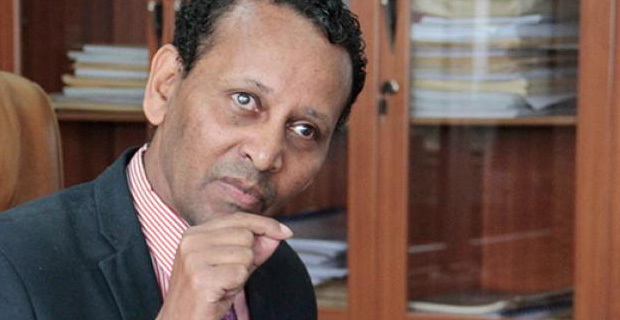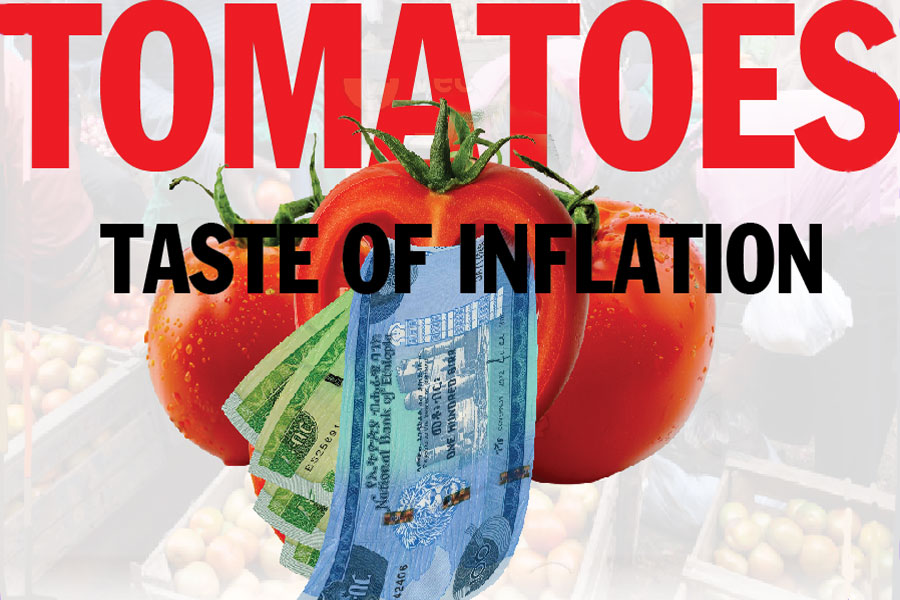
By Abdulmenan M. Hamza
The National Bank of Ethiopia released its bulletin for the last quarter of the past fiscal year recently, which had interesting facts pertaining to the financial sector’s development. While there were good achievements in some respects, there are areas of concerns that need attention.
Access to financial services had expanded. The number of bank branches reached 4,757, and the branch-number-to-population ratio went down to one for every 20,286 Ethiopians. The main beneficiaries of increasing access to banking were the residents of Addis Abeba.
Of the total bank branches, 35.3pc were in the capital, resulting in one branch for every 2,400 residents or eight times the national average. Although private banks are expected to make financial services accessible by opening more branches, more than 40pc of their branches are in the capital, whereas the figure for state-owned banks is 21pc. This reveals that considerable work is needed to bolster financial inclusiveness in most of the rural areas.
Apart from creating access to financial services, branch expansion has implications on deposit mobilisation and monetisation of the economy, even though it is an expensive strategy. The total deposits increased by 28.4pc to 730.3 billion Br.
Monetisation of the economy also transpired at a good pace. Over the past decade, money outside the banks as a proportion of total money went down to 11.7pc from 26pc, although it increased from 17.65 billion Br to 86.42 billion Br. This indicates that the number of people using cash for transaction purposes has been decreasing.
Regulatory-driven expansion of branch networks resulted in a considerable increase in operating costs. Now banks have even branched out into small rural villages. In the coming years, this strategy will reach a point where it will not be financially feasible. Banks need to scale their technological utilisation up to create wider access and mobilise more deposits before the existing strategy runs out of steam.
The average savings interest rate also increased to eight percent from 5.38pc. Banks are paying between seven and nine percent on savings. The increase is attributed to last year’s interest rate adjustment to dampen anticipated inflation due to the devaluation of the Birr. The increase in savings interest rates caused a parallel increase in lending rates from 12.75pc to 13.5pc. Banks would charge between seven percent to 20pc on loans and advances. This has an impact on investment and business. The main victims would be small businesses.
Macroeconomic imbalances remained as before. Inflation has been above two digits for more than a year. Exports were sticky. The devaluation of the Birr in October of last year did not make any difference to export performance, while the cost of imports soared. The status of government finance is worrying, the treasury bills market remained stagnant, the state-owned Commercial Bank of Ethiopia (CBE) had huge exposure to a few state entities, the Development Bank of Ethiopia (DBE) struggled with massive non-performing loans (NPL) and the share of credit given to state-owned enterprises (SOEs) was as high as before.
Even though many factors contributed to runaway inflation, the main culprits are loose fiscal and monetary policies that are expanding the budget, widening the budget deficit and state borrowing from the central bank.
Borrowing from the central bank is one method to fund deficits. And the amount of borrowing has been increasing from time to time as tax receipts fell short of expectations. Surprisingly, there was no borrowing from the central bank in the fourth quarter, and the outstanding balance remained 190.2 billion Br.
However, the sale of treasury bills soared unusually. In the fourth quarter, treasury bills worth 21.4 billion Br were sold, which is three times the usual amount. Further investigation of the issue reveals that a 17 billion Br, 364-day treasury bill that pays three percent interest a year was the main cause for such a surge.
As the treasury bills market was short of supplying enough funds to the treasury, the government too often resorted to excessive borrowing from the central bank. This practice has been severely criticised. In quarter four, the government employed a different scheme, which appeared more normal, to raise funds.
The NBE transferred an unusual amount of money collected from private banks to DBE for the DBE to buy treasury bills from the government. Some 17.3 billion was sent to DBE, while DBE’s quarterly net lending was about a billion Birr.
If we go by previous experience, the treasury bills market supplies about five billion Birr a quarter and the average interest rate is about 1.4pc. In the fourth quarter, treasury bills of 21.4 billion Br were sold as the government employed a different scheme. Of the total, 79pc charged three percent interest a year. This is very unusual for the treasury bills market.
What is very concerning with this scheme is that the money was collected from private banks with a justification for using the money for industrial development through DBE. However, the DBE used more than 60pc of the money received for acquisition of low yield treasury bills. Using private banks’ money to fund the government’s deficit is not only against the rationale of the central bank directive that compels private banks to purchase NBE’s bills but also an inefficient use of resources.
This has further implications for DBE. As money was raised from private banks at five percent interest a year, the DBE would have to absorb considerable losses, unless it could increase its lending rates.
Credit to the government, through federal, regional, the Addis Abeba City Administration and state-owned enterprises (SOEs), was still high. The credit taken by the government accounted for 61.6pc of the loans, advances and corporate bonds of the sector. Over the past decade, as the state took the main role of transforming the economy, the amount of credit supplied to the private sector has decreased.
Recent government actions indicate that the government is refraining from further involvement in the economy. Thus, it should create ample space for the private sector to flourish. One of the areas is increasing the availability of credit and reducing the cost of borrowing.
Commercial Bank of Ethiopia remained the chief funder of mega projects. As a result, its exposure to few state enterprises and regional governments is becoming alarming. It supplied 39.4pc of the banking sector credit to a few SOEs and regional governments. The increased exposure poses a serious risk to the bank as well as the financial sector.
What makes the exposure of the CBE more worrying is that the loss-making Ethiopian Electric Power (EEP) is one of the main borrowers. The amount of money advanced to EEP is not only increasing year by year, but also the EEP is not paying its debt according to the loan terms.
Between July 2017 and June 2018, EEP took out a loan of 37.05 billion Br and its outstanding debt to CBE by the end of the past fiscal year reached 216.4 billion Br. Considering the delay of Grand Renaissance Dam and its cost escalation, the repayment of such an enormous loan on time is questionable.
Excessive involvement of the government in the economy is the main cause for many of our economic ailments. Addressing the problems of the economy will correct the anomalies of the financial sector along the way.
The government should think seriously about rebalancing the economy and clarifying its role in economic development. Putting a break on expanding government expenditures, reducing the budget deficit, limiting borrowing from the central bank, refraining from excessive involvement in the economy and creating enough space for the private sector is important.
PUBLISHED ON
[ VOL
19 , NO
968]


Fortune News | Apr 06,2019

Radar | Jul 01,2023

Fortune News | Mar 23,2019

My Opinion | Sep 10,2022

Radar | Oct 14,2023

Radar | Apr 08,2023

Radar | Jul 03,2021

Editorial | Nov 27,2021

Fortune News | Apr 16,2022

Radar | Dec 01,2024

Photo Gallery | 174184 Views | May 06,2019

Photo Gallery | 164409 Views | Apr 26,2019

Photo Gallery | 154550 Views | Oct 06,2021

My Opinion | 136650 Views | Aug 14,2021
Editorial | Oct 11,2025

Dec 22 , 2024 . By TIZITA SHEWAFERAW
Charged with transforming colossal state-owned enterprises into modern and competitiv...

Aug 18 , 2024 . By AKSAH ITALO
Although predictable Yonas Zerihun's job in the ride-hailing service is not immune to...

Jul 28 , 2024 . By TIZITA SHEWAFERAW
Unhabitual, perhaps too many, Samuel Gebreyohannes, 38, used to occasionally enjoy a couple of beers at breakfast. However, he recently swit...

Jul 13 , 2024 . By AKSAH ITALO
Investors who rely on tractors, trucks, and field vehicles for commuting, transporting commodities, and f...

Oct 11 , 2025
Ladislas Farago, a roving Associated Press (AP) correspondent, arrived in Ethiopia in...

Oct 4 , 2025
Eyob Tekalegn (PhD) had been in the Governor's chair for only weeks when, on Septembe...

Sep 27 , 2025
Four years into an experiment with “shock therapy” in education, the national moo...

Sep 20 , 2025
Getachew Reda's return to the national stage was always going to stir attention. Once...

Oct 12 , 2025
Tomato prices in Addis Abeba have surged to unprecedented levels, with retail stands charging between 85 Br and 140 Br a kilo, nearly triple...

Oct 12 , 2025 . By BEZAWIT HULUAGER
A sweeping change in the vehicle licensing system has tilted the scales in favour of electric vehicle (EV...

Oct 12 , 2025 . By NAHOM AYELE
A simmering dispute between the legal profession and the federal government is nearing a breaking point,...

Oct 12 , 2025 . By NAHOM AYELE
A violent storm that ripped through the flower belt of Bishoftu (Debreziet), 45Km east of the capital, in...